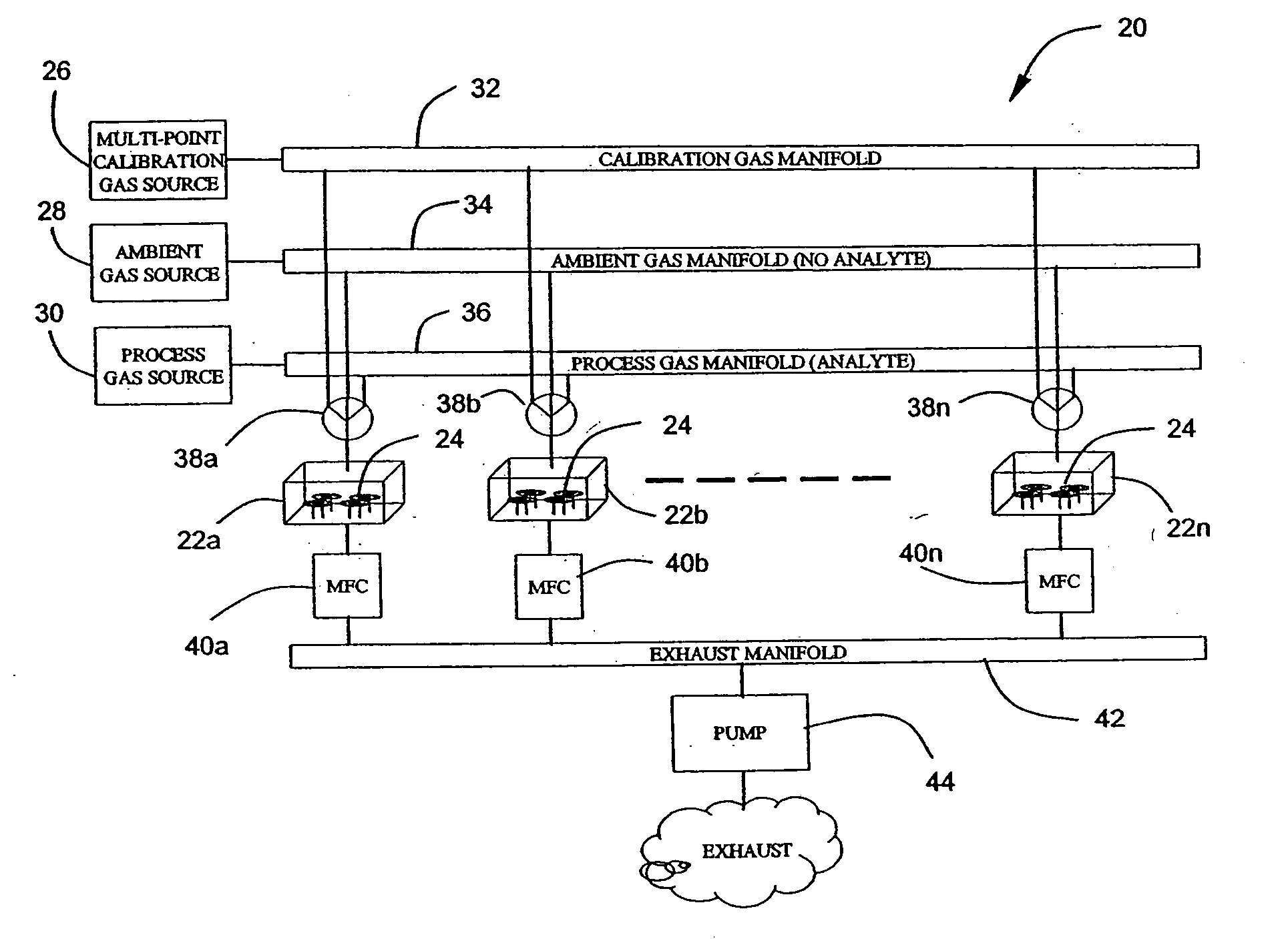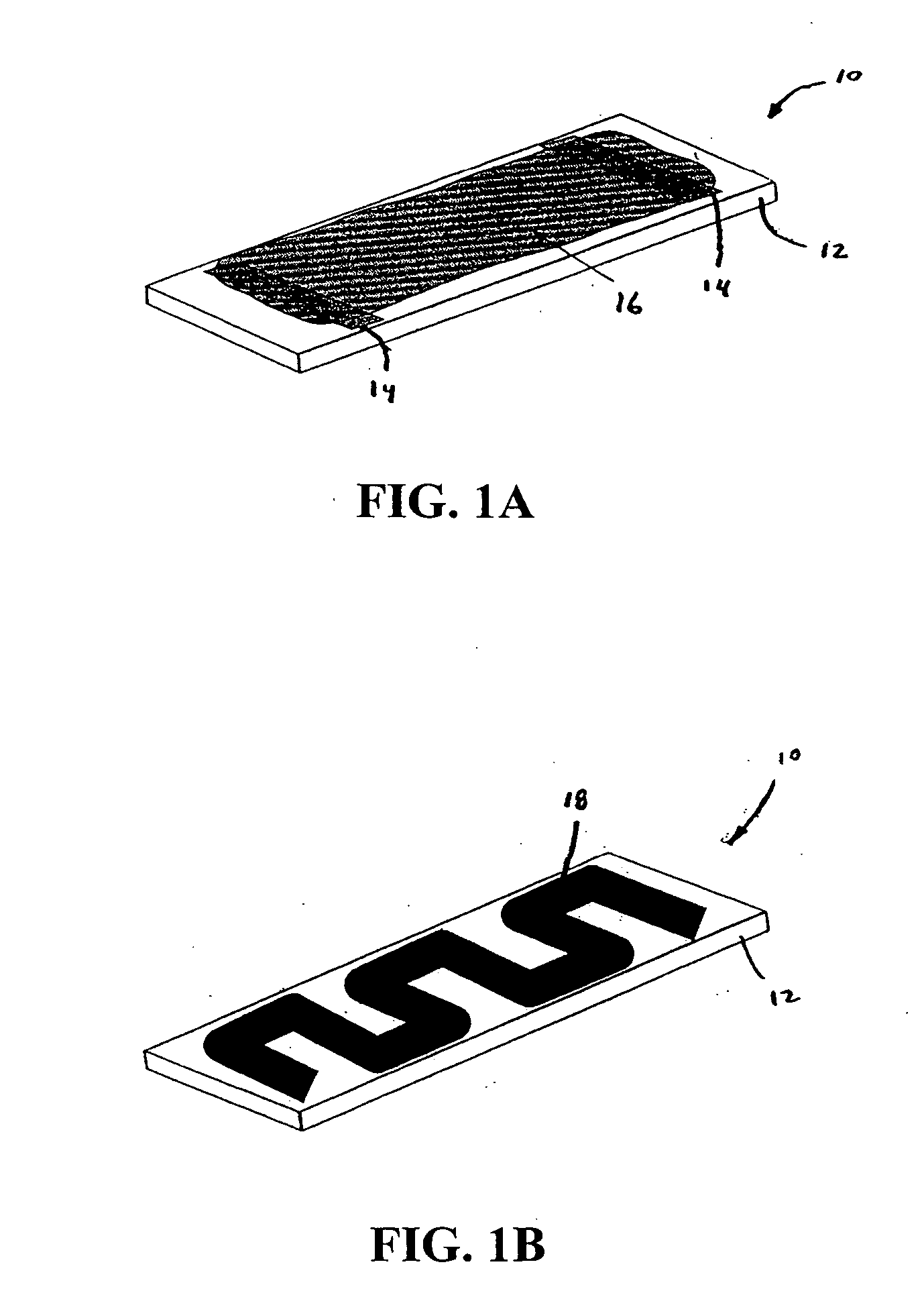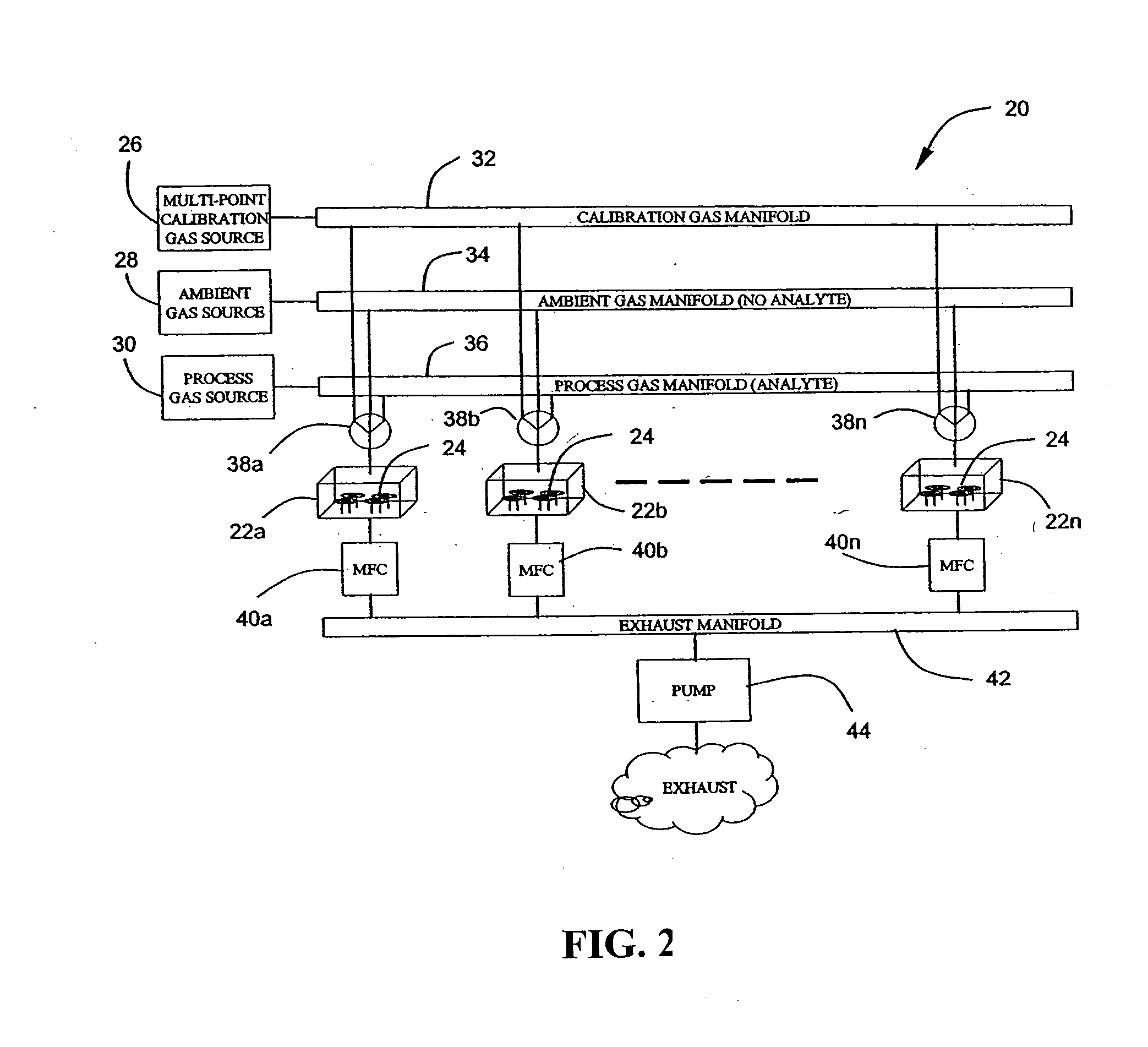Analyte quantitation using semiconducting metal oxide gas sensors
a technology of semiconducting metal oxide and gas sensors, which is applied in the calibration of gas analysers, instruments, specific gravity measurements, etc., can solve the problems of increasing the potential barrier at the grain boundary, complex detection mechanism of smo sensors, and not being fully understood
- Summary
- Abstract
- Description
- Claims
- Application Information
AI Technical Summary
Problems solved by technology
Method used
Image
Examples
Embodiment Construction
[0028] The present invention relates to systems and methods for analyte quantitation using semiconducting metal oxide (SMO) gas sensors. Quantitation, as it relates to gas sensing applications, can be defined as the chemical determination of the amounts or proportions of constituents in a sensing environment. The present invention employs several SMO gas sensors (or more particularly several sensor cells containing multiple SMO gas sensors) to determine the quantity of analyte present in the environment over a sampling period (i.e. quantitate).
[0029]FIG. 2 shows one embodiment of an SMO-based gas sensor system 20 for carrying out analyte quantitation. The system 20 includes a plurality of sensor cells 22, with each sensor cell 22 containing multiple SMO gas sensors 24 and having a valve selectable input plumbed into three gas environments. One environment is a multi-point (i.e., capable of producing various analyte concentrations) calibration gas source 26, the second environment i...
PUM
| Property | Measurement | Unit |
|---|---|---|
| semiconducting | aaaaa | aaaaa |
| time | aaaaa | aaaaa |
| time intervals | aaaaa | aaaaa |
Abstract
Description
Claims
Application Information
 Login to View More
Login to View More - R&D
- Intellectual Property
- Life Sciences
- Materials
- Tech Scout
- Unparalleled Data Quality
- Higher Quality Content
- 60% Fewer Hallucinations
Browse by: Latest US Patents, China's latest patents, Technical Efficacy Thesaurus, Application Domain, Technology Topic, Popular Technical Reports.
© 2025 PatSnap. All rights reserved.Legal|Privacy policy|Modern Slavery Act Transparency Statement|Sitemap|About US| Contact US: help@patsnap.com



